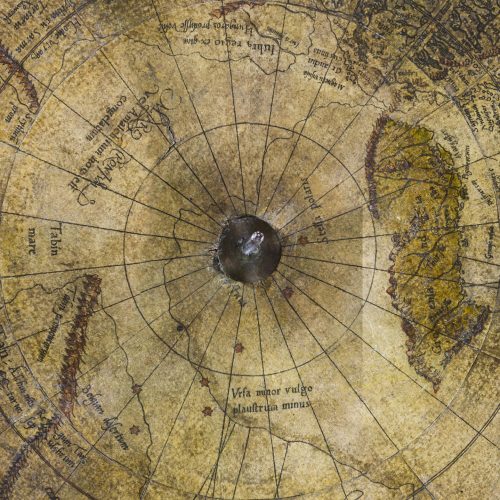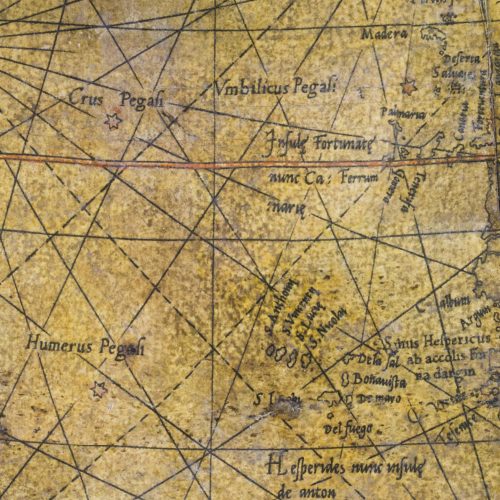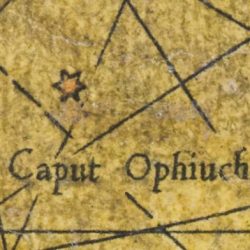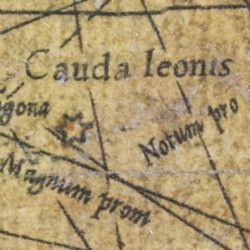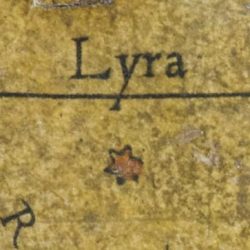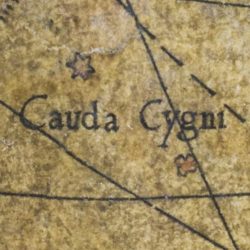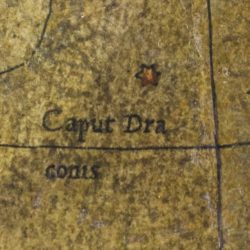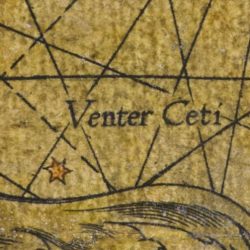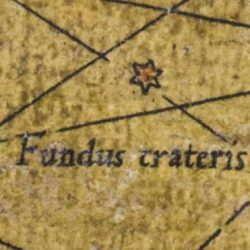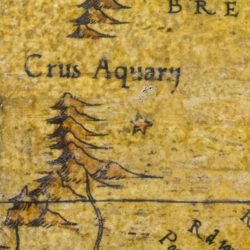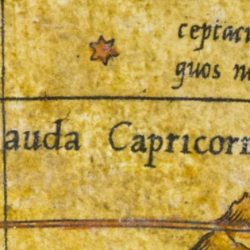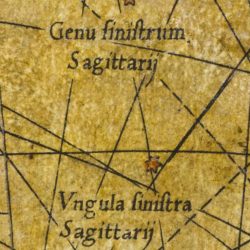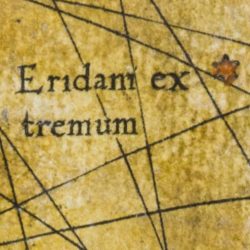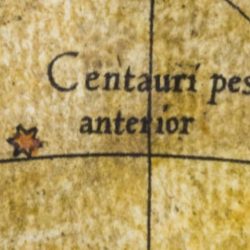Stars and constellations to guide travellers
Gerardus Mercator tried to improve his terrestrial globe by adding stars (as Gemma Frisius did) that could serve as reference points for travellers. The terrestrial globe shows 29 stars in several different areas: in the seas, in the middle of the deserts of Africa, on the plains of America and Asia and near the North Pole. Their size and brightness were meant to help travellers get their bearings.
Mercator may have wanted to help sailors or travellers to find their way more easily during the night, an aim that the compass set into the horizon ring also suggests. These features thus combined the terrestrial and celestial globes in one, supposedly making it less cumbersome than taking both on a journey. It seems unlikely, however, that even the terrestrial globe alone would have been a travelling companion.
- La tête du Serpentaire (13°N 115°W). © UNIL
- La queue du Lion (17°N 157°E). © UNIL
- La Lyre (40°N 99°W). © UNIL
- La queue du Cygne (42°N 66°W). © UNIL
- La tête du Dragon (51°N 109°W). © UNIL
- Le ventre de la Baleine (11°S 10°E). © UNIL
- La base de la Coupe (16°S 144°E). © UNIL
- La jambe du Verseau (17°S 39°W). © UNIL
- La queue du Capricorne (21°S 55°W). © UNIL
- Le genou et le sabot gauches du Sagittaire (39°S 97°W). © UNIL
- L’extrémité de l’Eridan (44°S 25°E). © UNIL
- Le pied antérieur du Centaure (59°S 150°W). © UNIL
